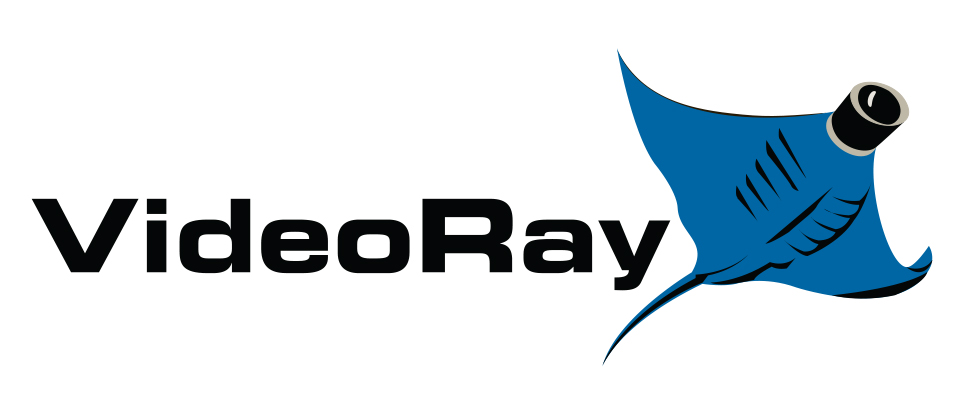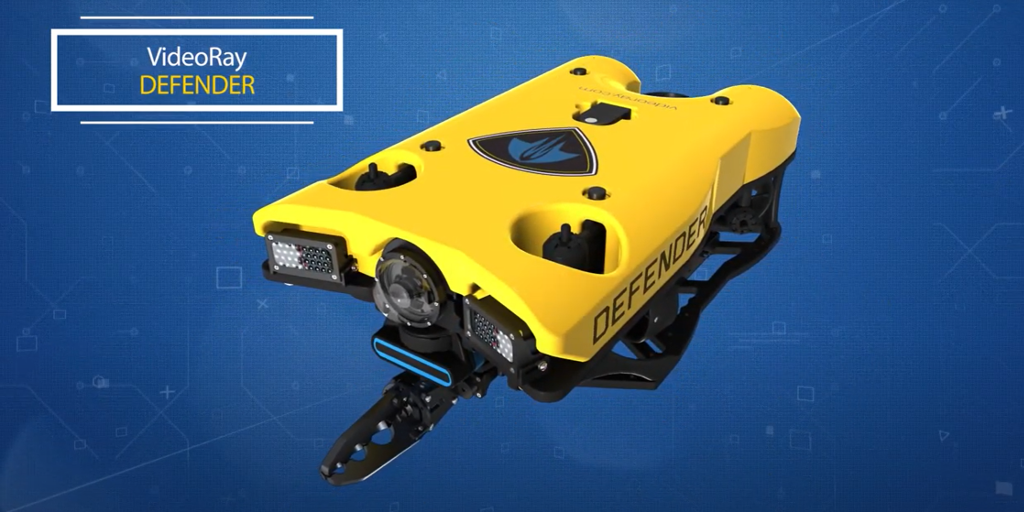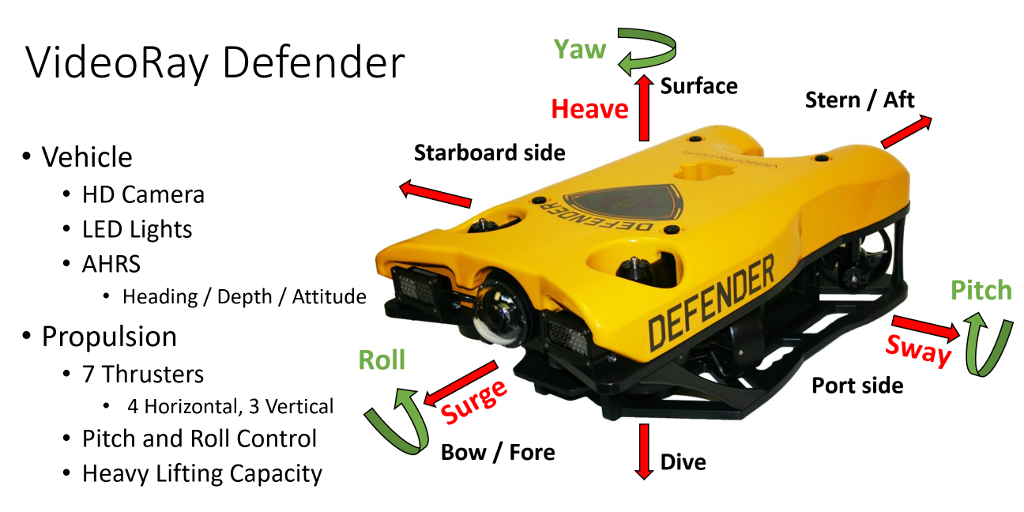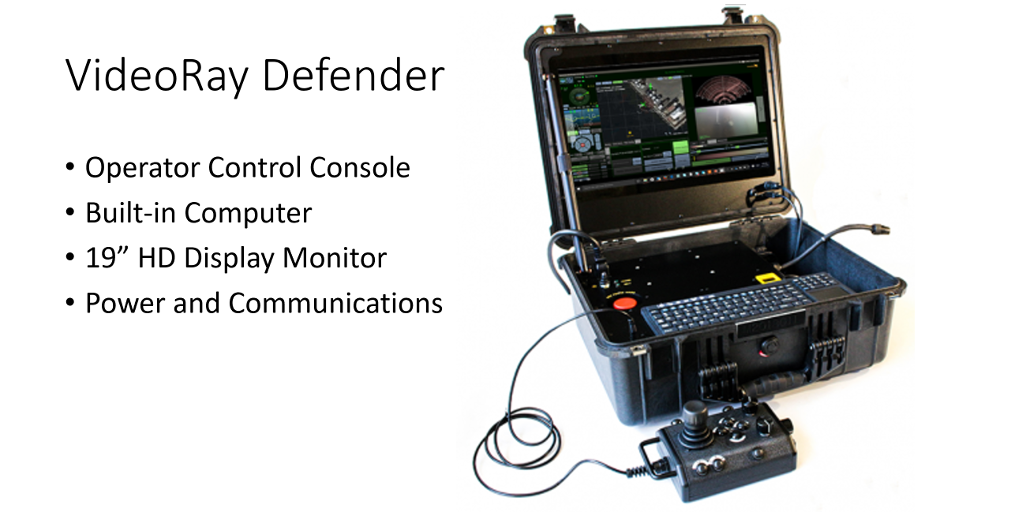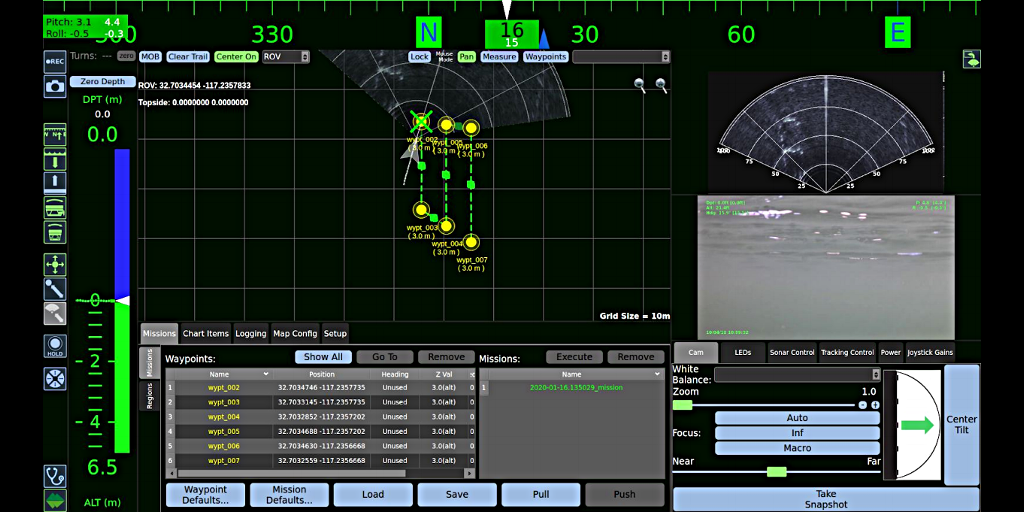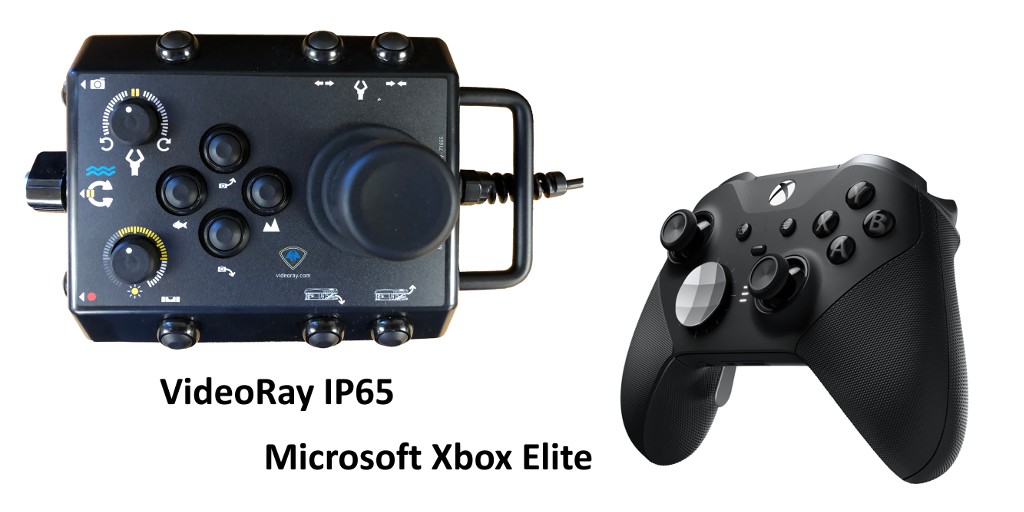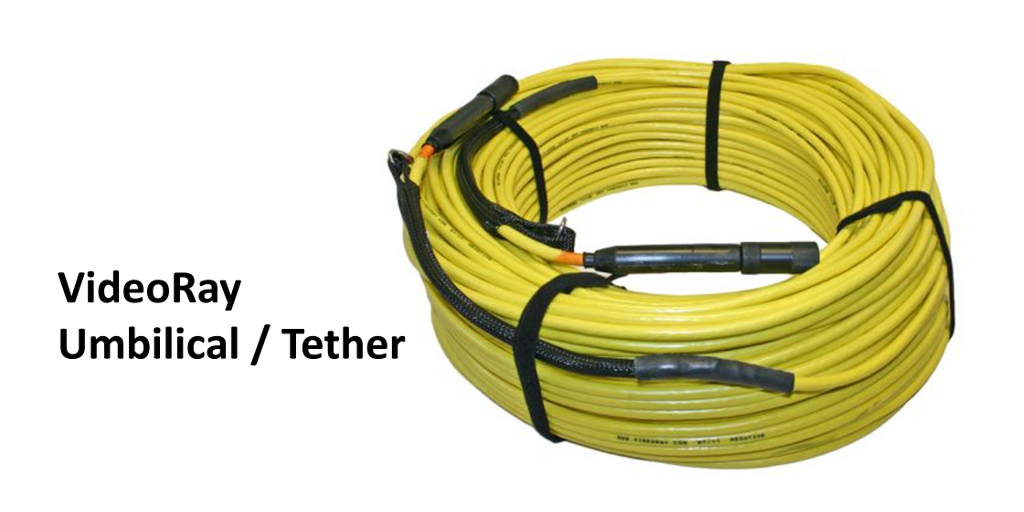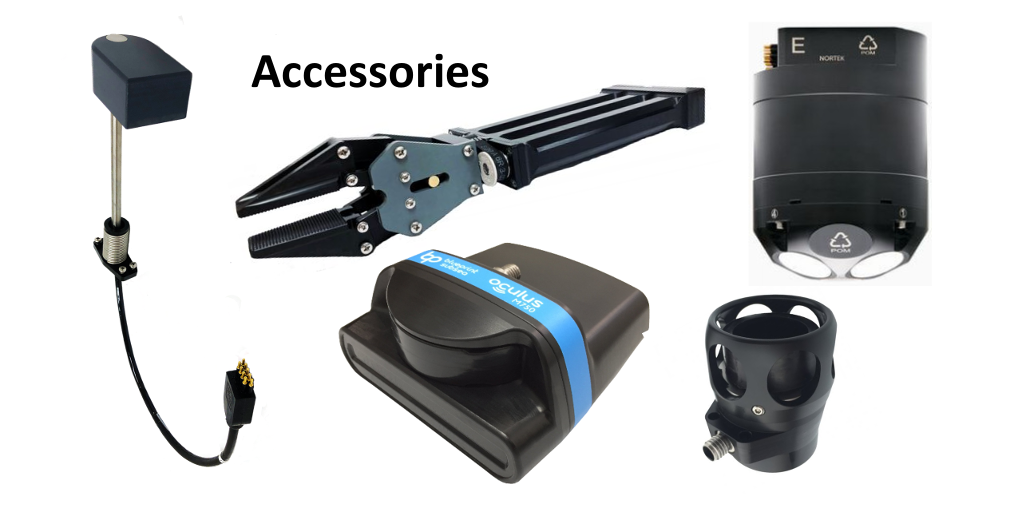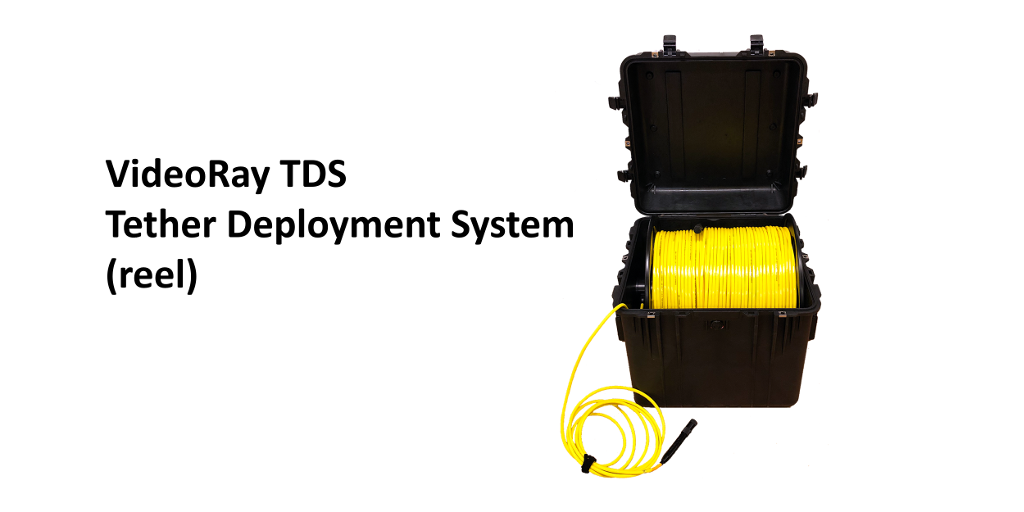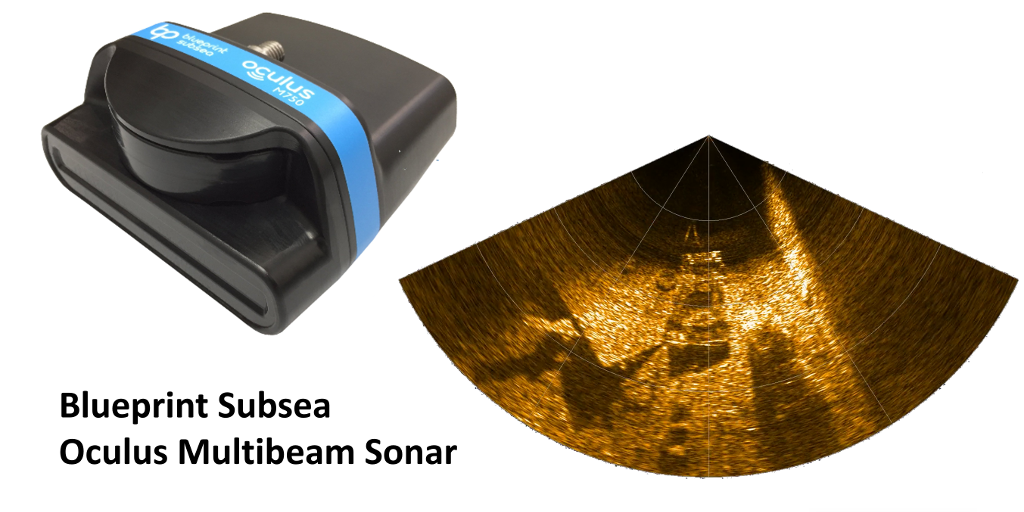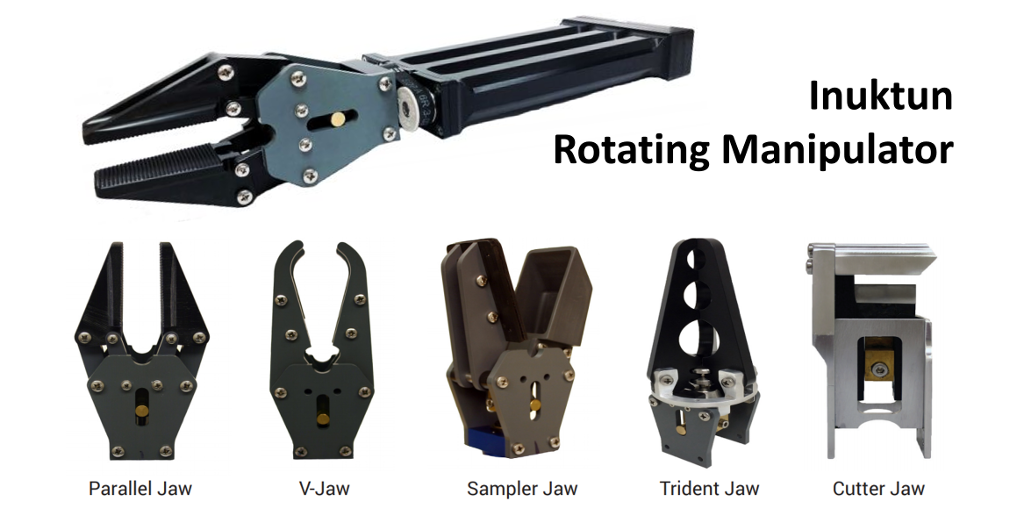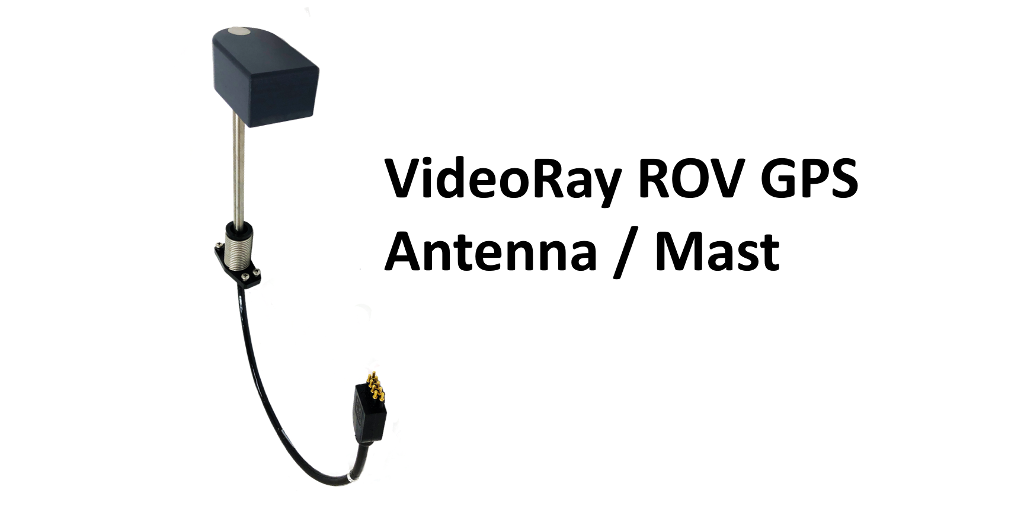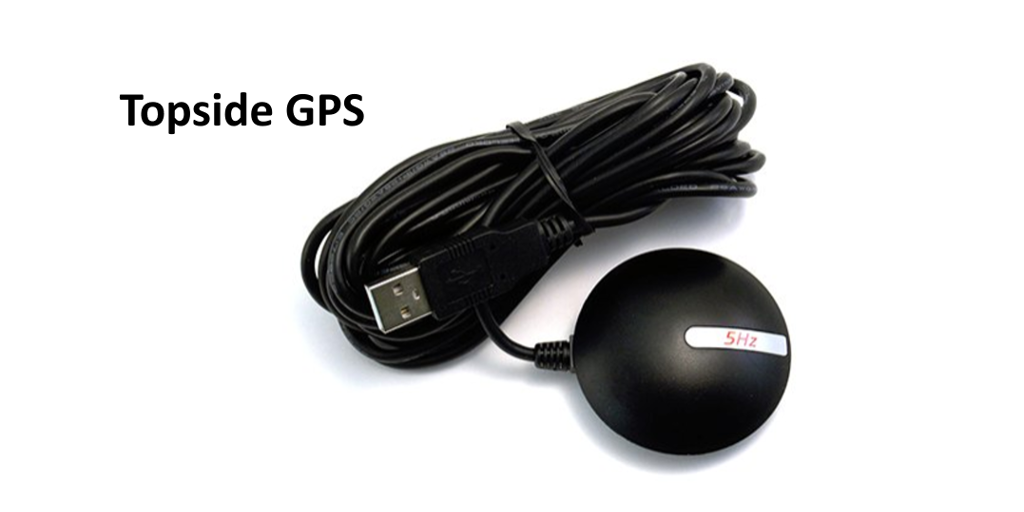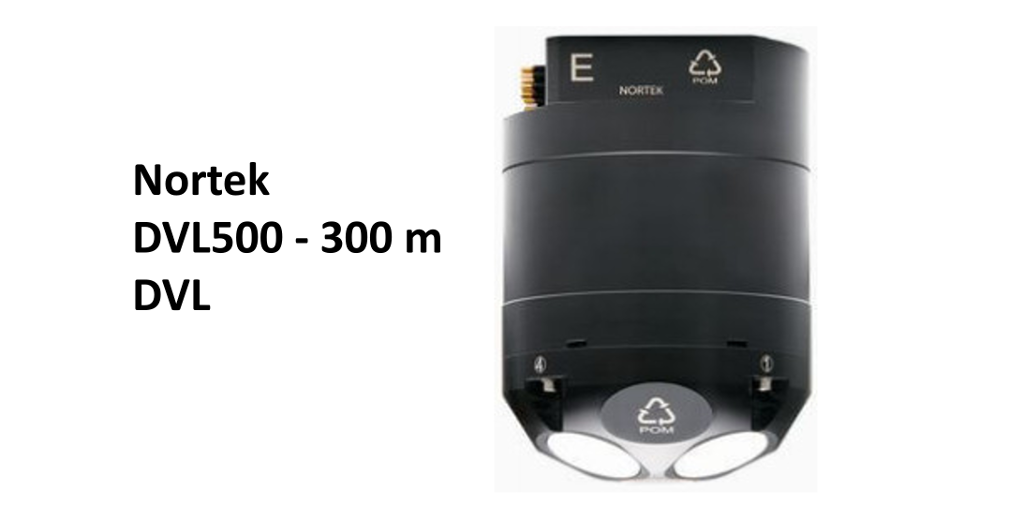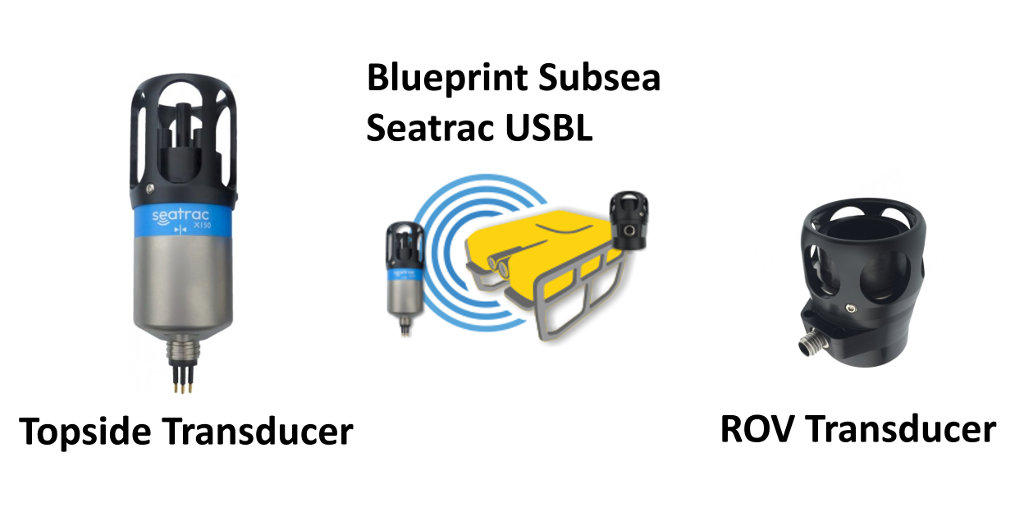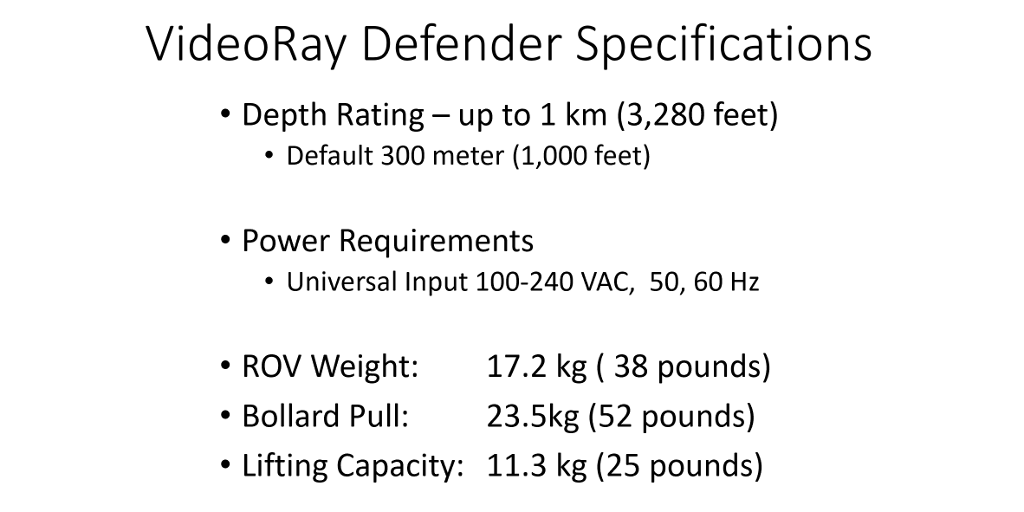|
Some important Defender specifications to be aware of include the vehicle depth rating of up to 1 km (or 3,280 ft). The standard float block (yellow top cover) is only rated to 400 m (or 1,300 ft), but a deeper rated float block is available. Most accessories are rated to 300 m (or 1,000 ft), but some accessories can be ordered with a deeper rating.
The Defender system requires an external power source and uses a universal power supply input of 100-240 V AC, 50,60 Hz. Power can be supplied by a land based grid, generator or batteries.
The Defender Vehicle weighs 17.2 kg (or 38 pounds). It has a forward speed of 4 Knots and Bollard Pull of 23.5 kg (or 52 pounds) (almost 1.4 times the vehicle weight. It is capable of lifting 11.3 kg (or 25 pounds) and with pitch control can maintain level attitude and full navigational control while carrying that weight.
|
